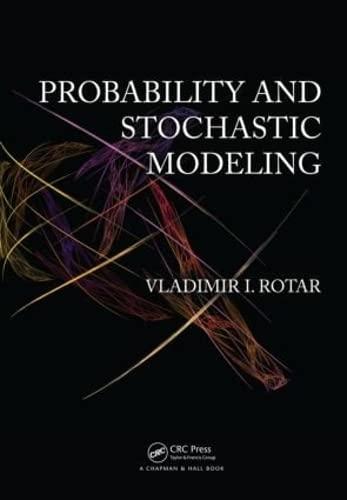Consider a r.v. taking values x 1 ,x 2 , ...with probabilities p 1 , p 2
Question:
Consider a r.v. taking values x1,x2, ...with probabilities p1, p2, ... , respectively. Let the xi’s be equally spaced, that is, xi+1 −xi equals the same number for all i. Assume that for a particular i, we replaced probabilities pi−1, pi, pi+1 by probabilities pi−1+Δ, pi−2Δ, pi+1+Δ where a positive Δ ≤ pi/2. Has the new distribution become worse or better in the EUM-risk-aversion case? Justify the answer.
Fantastic news! We've Found the answer you've been seeking!
Step by Step Answer:
Related Book For 

Question Posted:





